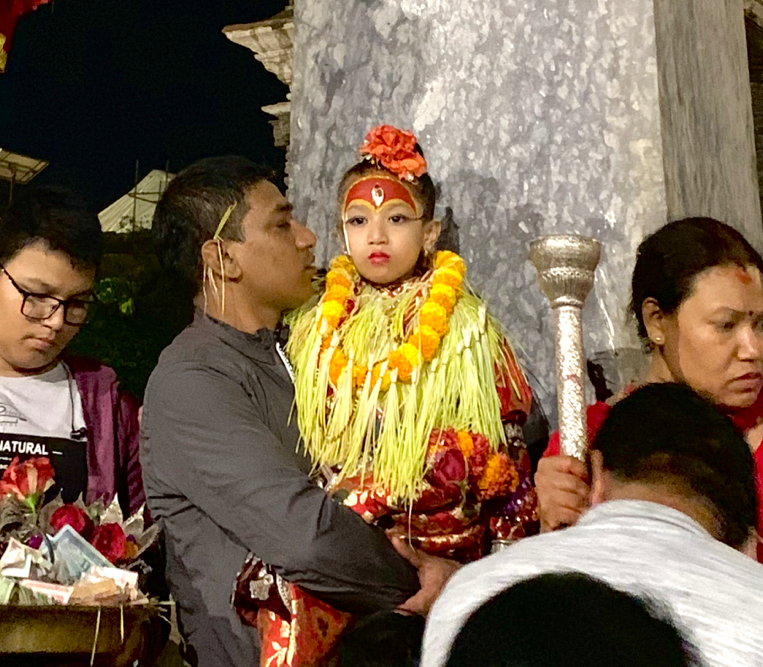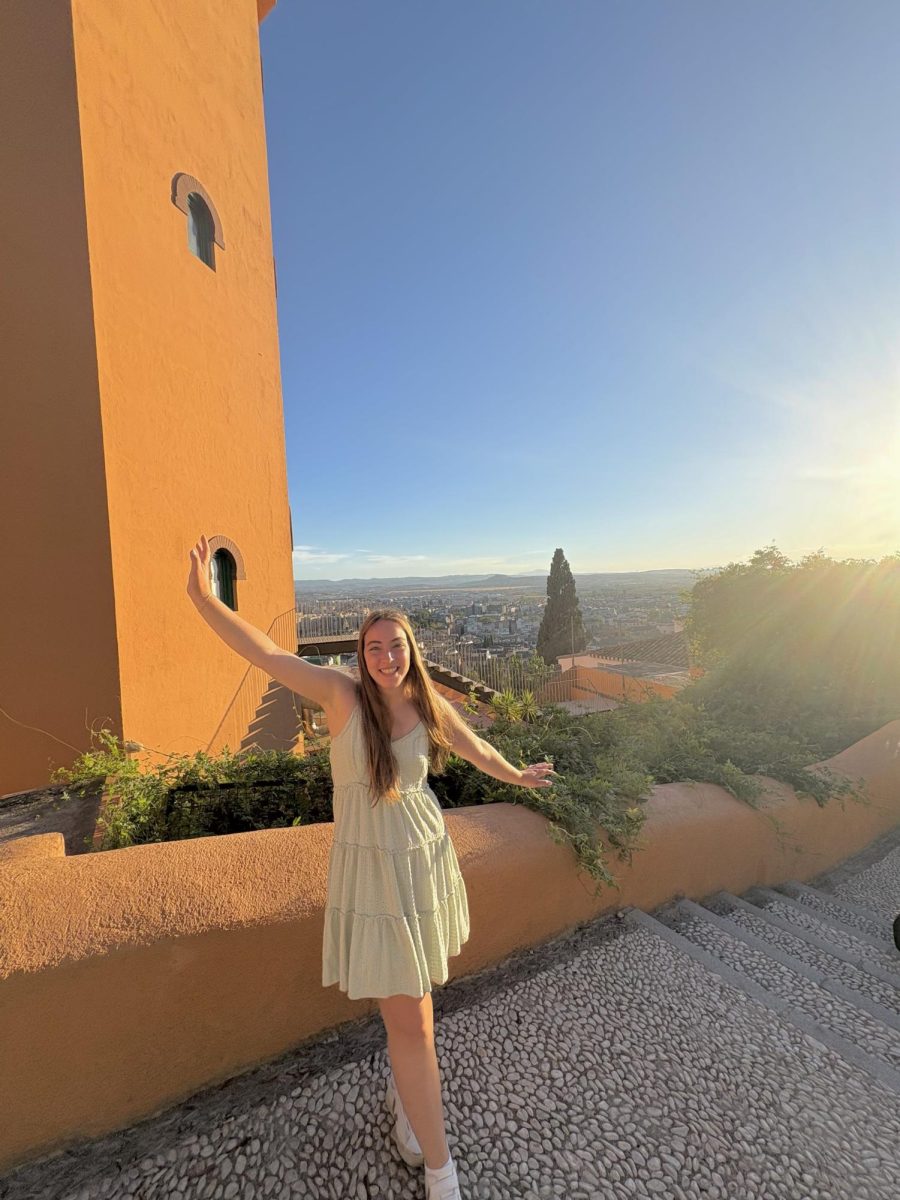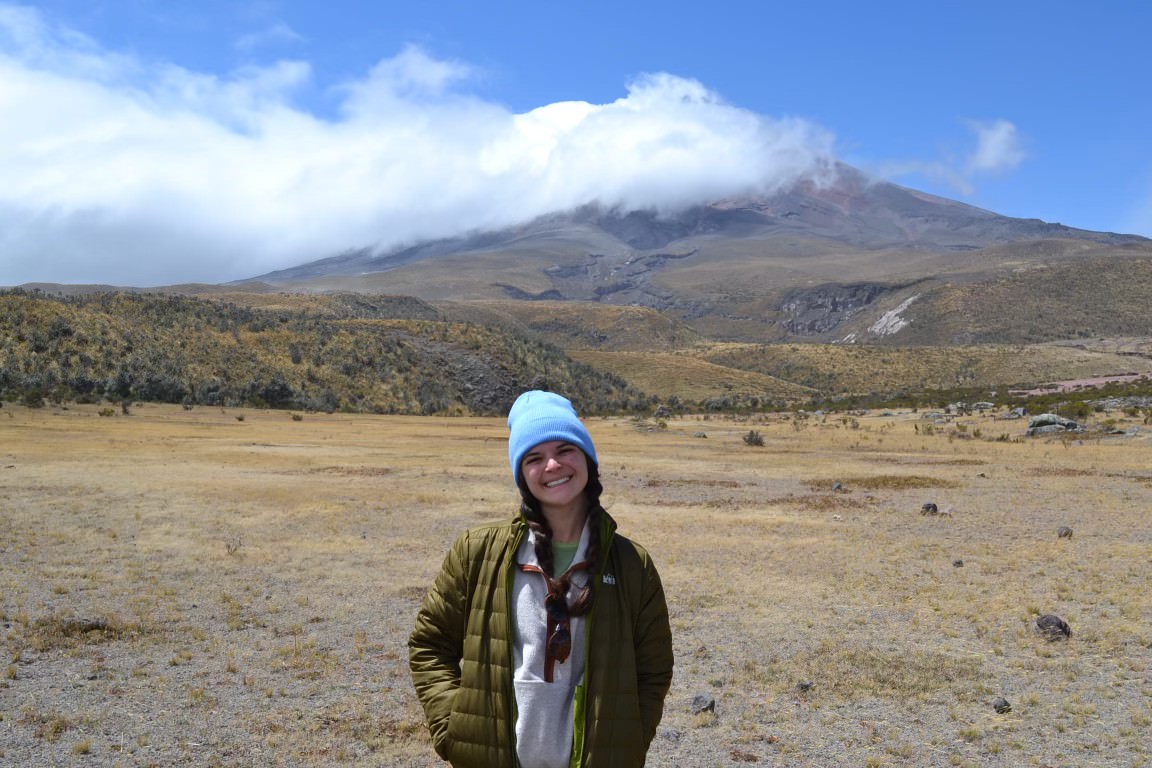The unique life of a Kumari
Photo Caption: The Kumari in Patan, Nepal being held by her caretaker. Worshippers touch their heads to her feet for blessings before the Kumari returns to her private temple.
During my first week in Nepal, I was fortunate enough to experience one of the country’s largest festivals. Dashain is a fifteen-day celebration concluding monsoon season and commemorating the triumph of good over evil. The festival is family-oriented and luckily, I am living with a wonderful homestay family in Kathmandu who graciously let me join in on the festivities. We celebrated the Hindu festival by receiving tika on our foreheads, a mixture of rice and red coloring and gifts from the family as they wished us good fortune.
While Dashain was an incredible holiday spent with friends, the highlight of my first week in Nepal was meeting the Kumari, or Living Goddess. I had never heard of a Kumari before, understandably so considering she only exists in Nepal. A Kumari is a young girl worshipped by both Buddhism and Hinduism in Nepal as the embodiment of the goddess Durga. The goddess is said to inhabit the bodies of young girls until they reach puberty; therefore, most Kumaris are selected between the ages of three and seven, and serve until they start menstruation. Every facet of the Kumari’s existence is fascinating, from the selection process to how Nepalis worship the child.
Once a sitting Kumari gets her period, has a severe illness or sheds excess blood from injury, there is a rush to find the next child goddess. Eligible young girls from the Newar caste undergo a mysterious selection process to determine if they are the true incarnation of the goddess. There are dozens of stories detailing strenuous selection rituals. According to one tale, young girls are surrounded by the severed heads of dead cows while masked men dance around them. The physical examination looks for thirty-two characteristics of perfection, such as no blemishes and ‘thighs like a deer.’ Overall, the selection process is veiled in secrecy, as is the Kumari’s life once she is selected.
The Kumari is wholly removed from society. Once selected, she is taken from her family to live in the traditional home of the goddess where she will remain at all times except for festivals or rituals. She is not allowed to walk since the ground is believed to be dirty, so the child is carried by her caretaker to all events. She does not speak to anyone except her family and her appointed private tutor (a modern change, since the previous tradition was to not educate the girls).
When I say that Nepalis worship the Living Goddess, I mean they worship her. It is considered good luck to simply glimpse the goddess, and for those lucky enough to meet her, there are specific practices to be followed to receive her blessing.
First, you must get on your knees before the seated child and bow before her. Many worshippers press their heads to the Kumari’s feet, which never touch the ground and are therefore clean and sacred. It is believed that the Living Goddess possesses powers of healing and can bestow good fortune upon worshippers through this touch. After bowing, it is customary to give a gift of money, flowers or food to the Kumari as she presses red tika on your forehead.
Throughout this small ceremony, the Kumari is closely observed. Supposedly, the Goddess has full control over the actions of the child and each action has a meaning. If the Kumari laughs, it means serious illness or imminent death awaits; if she pokes at her food offerings, you will have financial trouble. The best reaction is no reaction. Oh, and be sure to avoid eye contact, for it is very disrespectful to the Living Goddess!
I was briefed on all of these rules in about five minutes before I met the Kumari in a very private ceremony traditionally held near my homestay. Needless to say, I was a little terrified. Yet the whole process went very well and it was truly a once in a lifetime experience. In fact, it is a quite rare and special privilege to be so close to a Kumari—the King himself used to touch her feet for blessings every year.
The Living Goddess is usually hidden from everyday life and only emerges from her home for 15 festival days a year. A private encounter with her is something few in their life will experience, and I am extremely grateful for this opportunity provided by my host family in Nepal.
This practice of Kumari worship is of course not without criticism. The continued stigma around menstruation in Nepal and India is incredibly harmful to girls, and is only amplified by the Kumari. The solidarity of the Kumari, the rules preventing her from speaking or walking, the removal from her family–all of these things make the forceful transition to normal society problematic. Some former Kumaris acknowledge the difficulty of transitioning from a Goddess to an ‘ordinary girl,’ but most speak of their time as the Living Goddess with appreciation and were happy to fulfill such an important spiritual and cultural role.
There’s less than four weeks left in Nepal for me and so much left to do! If you have any questions about my study abroad or any activities I’m doing, please shoot me an email at [email protected]!

































